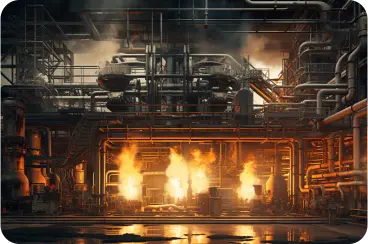Eco-friendly homes
Living in a natural environment is the new mantra these days. In the wake of this urge to ‘go green’, eco-friendly homes are getting the hype these days. Construction materials that translate into environmental pollution according to the international building code 2018 have made people feel the need to opt for environmentally friendly ways to save the world from falling prey to grave issues like global warming. From improving indoor air quality to improving overall climate change, eco-friendly homes are the next big thing. Here is everything you need to know about this innovation:
What is meant by building an environmentally friendly home?
The implications of the term ‘eco-friendly home’ vary from person to person. Some people add green features like solar panels can make a home qualify for it, whereas others believe that certification from green building programs is necessary.
How people built eco-friendly homes?
Small homes. The smaller a home is, the less building material it will require and will consume less energy to counter the weather conditions. When planning to build homes, assess your needs accurately. Make sure you know exactly how many rooms do you need or what should be the size of the room. Tiny and small houses are really in fashion these days, you must have noticed them in tv shows. You can get some great and applicable ideas from these and can enjoy an energy-efficient home.
The construction material:
There are many options available when it comes to construction materials. Sustainable construction materials include savage wood or any recycled materials. These materials enhance the indoor air quality, which otherwise would be compromised by the wall stains, paints, and other air pollutants. Since we spend more than half of our day in our homes, healthy air quality will undoubtedly lead to better health conditions.
Passive houses:
Passive houses are designed to minimize the use of energy. This can be built in several ways, such as using effective wall insulation to keep the inside of the house safe from harsh weather conditions. Window glasses should be made from good material to prevent the heat from entering the house; there should be an in-built ventilating system to keep the house airy, cool or warm as per the weather. Moreover, the roof should provide air-tight protection. Passive house designs reduce the energy consumption of a household to a great extent. This will also help you to save as the energy costs will be reasonably low.
Saving water!
Water crises are for real, and they will create havoc for the generations to come if we don’t focus on saving them. This can be done by switching our sanitary items to low flow and installing things like dual flushes. Eco-friendly homes are meant to keep the environment at its best, and saving water is the top priority at this moment.
Energy saving mode – solar panels:
You need to integrate various machines and items to reduce your energy consumption. This can be done by either using inverters, solar panels, residential wind turbines, or leds, and many such energy-saving items that are readily available in the markets. Anything that can help to save energy will set your house to an energy-saving mode. There are various ways to either build an eco-friendly home or convert your current home to it. Since the definition of an environmentally friendly family varies from person to person, its composition also varies. The main aim is to keep the environment safe, untouched, and unchanged from human intrusion, and this can be quickly done owing to technological advancements.
Text written by: Bella Roy. Pictures’ authors on sequence… Bella Roy, Enviromental Blog and Pinterest.
If you liked, please, share this link.






